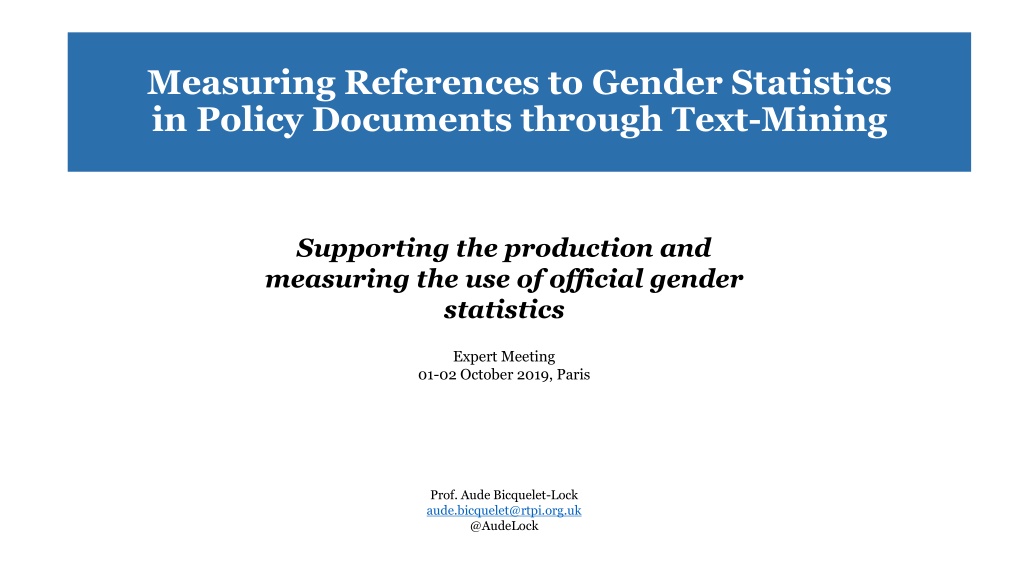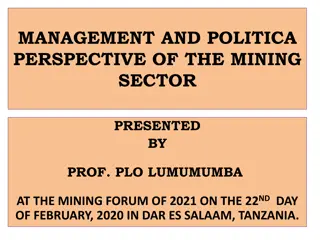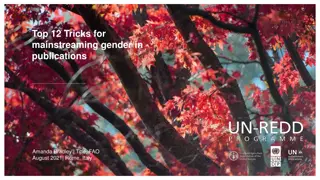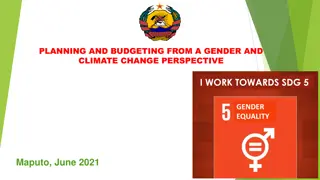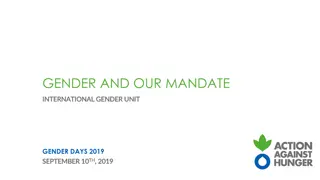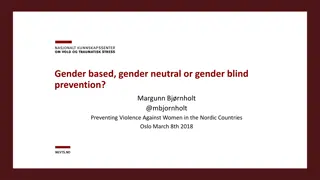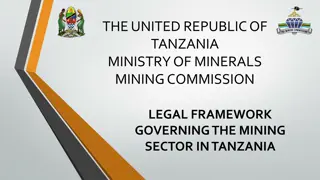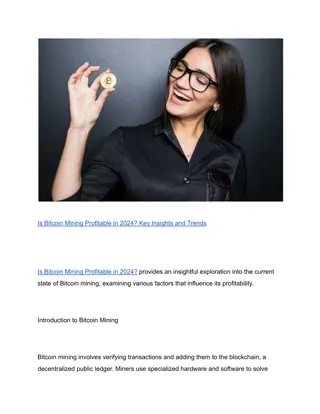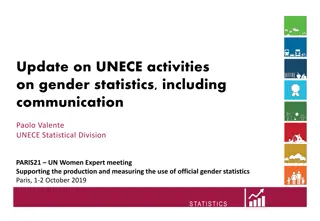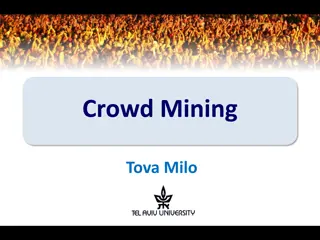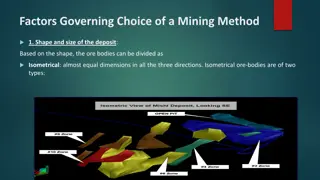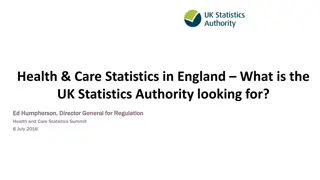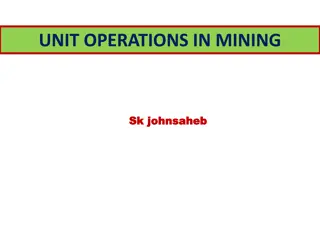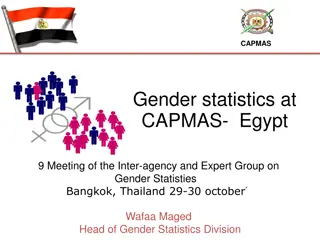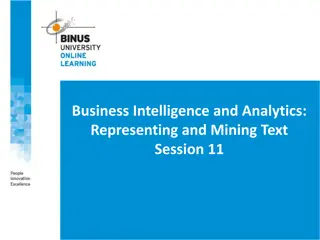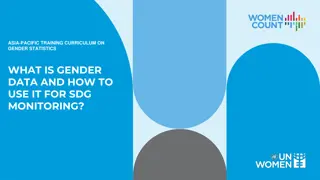Gender Statistics in Policy Documents: Text-Mining Analysis
This text explores the use of gender statistics in policy documents through text-mining techniques. It discusses gender differences in parliamentary speeches, focusing on the types of arguments expressed by men and women. The findings reveal insights into rhetorical strategies employed, political alignment influences, and vocabulary differences between genders. The analysis also delves into the methods of text-mining, enumerative content analysis, and designing key terms lists for generating classification in official policy documents.
Download Presentation

Please find below an Image/Link to download the presentation.
The content on the website is provided AS IS for your information and personal use only. It may not be sold, licensed, or shared on other websites without obtaining consent from the author. Download presentation by click this link. If you encounter any issues during the download, it is possible that the publisher has removed the file from their server.
E N D
Presentation Transcript
Measuring References to Gender Statistics in Policy Documents through Text-Mining Supporting the production and measuring the use of official gender statistics Expert Meeting 01-02 October 2019, Paris Prof. Aude Bicquelet-Lock aude.bicquelet@rtpi.org.uk @AudeLock
Text-Mining and Gender differences in Parliamentary Speeches Research Question: Do men and women express similar (or different) types of arguments in parliamentary debates? Data: Second reading debates about abortion 1966-1988 (UK House of Commons) Methods: Cluster Analysis Correspondence Analysis Descending hierarchical classification i.e. Bicquelet Aude, Albert Weale, Judith Bara In a Different Parliamentary Voice? Politics & Gender, (2012) 8 -1. 83-121.
Text-Mining and Gender differences in Parliamentary Speeches: Findings Women use a larger array of rhetorical strategies than men. Political alignment does not seem to influence the way arguments are framed. Few differences between vocabulary and rhetorical strategies used by Women and Men.
Text-Mining Methods Enumerative Content Analysis Simply establish the presence/absence of words/concepts in a text. Useful to assess references to Gender, Women and Equality in Official Policy Documents. i.e.Women and Core Strategies (K. Horwood). Looks at how documents produced by planning authorities in England engage with women, gender and broader equalities. Exploratory v. Dictionary-Based approaches Hamlet (dictionary-based) v. Alceste (exploratory CA) Compare outputs of Abortion debates analysis i.e. Judith Bara, Albert Weale, Aude Bicquelet. Analysing Parliamentary Debates with Computer Assistance Swiss Political Science Review (2007) 13 -4: 577-605.
Designing Key Terms lists, dictionaries and index Using techniques from Summative Content Analysis 1. Exploratory Phase (Cluster Analysis, FA, HDC) 2. Interpretative exercise (Robustness check) Advantages Generate classification free from preconceptions Produce fast results High reliability/ replicability Minimize danger to overlook valuable information i.e. Bicquelet Aude, Helen Addison. How to refuse a vote on the EU? The case against the referendum in the House of Commons (1974-2010) (2016) Quality & Quantity.
Exploratory CA Applications Parliamentary debates (Schonhardt-Bailey 2008; Weale et al. 2012; Bara et al. 2007) Public consultations (Bicquelet and Weale 2011 - National Institute for Health and Care Excellence) Political Manifestos (Bicquelet, 2007) Open-ended Questionnaires (Brugidou 2003; Lahlou 1996) Social Media (Bicquelet, 2017 Comments posted under YouTube videos)
Resources Bicquelet, A. (2017). Using Online Mining Techniques to inform Formative Evaluations: An Analysis of YouTube Video Comments about Chronic Pain Evaluation. Bicquelet, A. & Weale, A. (2011), Coping with the cornucopia: Can Text Mining Help Handle the Data Deluge in Public Policy Analysis? Policy & Internet (Vol.3, N.4) Brugidou, M. (2003) Argumentation and Values: An Analysis of Ordinary Political Competence via an Open-Ended Question International Journal of Public Opinion Research, 15:4, pp. 413- 430. Gu rin-Pace, F (1998) Textual Statistics. An Exploratory Tool for the Social Sciences , New MethodologicalApproaches in the Social Sciences, 10:1, pp. 73-95. Lahlou, S. (1996) A Method to Extract Social Representations from Linguistic Corpora. Japanese Journal of Experimental Social Psychology. 36:1, pp. 278 291. Schonhardt-Bailey, C. (2005) Measuring Ideas More Effectively: An Analysis of Bush and Kerry's National Security Speeches , PS: Political Science and Politics, 38:3, pp. 701-711. Schonhardt-Bailey, C. (2008), The congressional debate on partial-birth abortion: Constitutional gravitas and moral passion. British Journal of Political Science (38:383 410).
